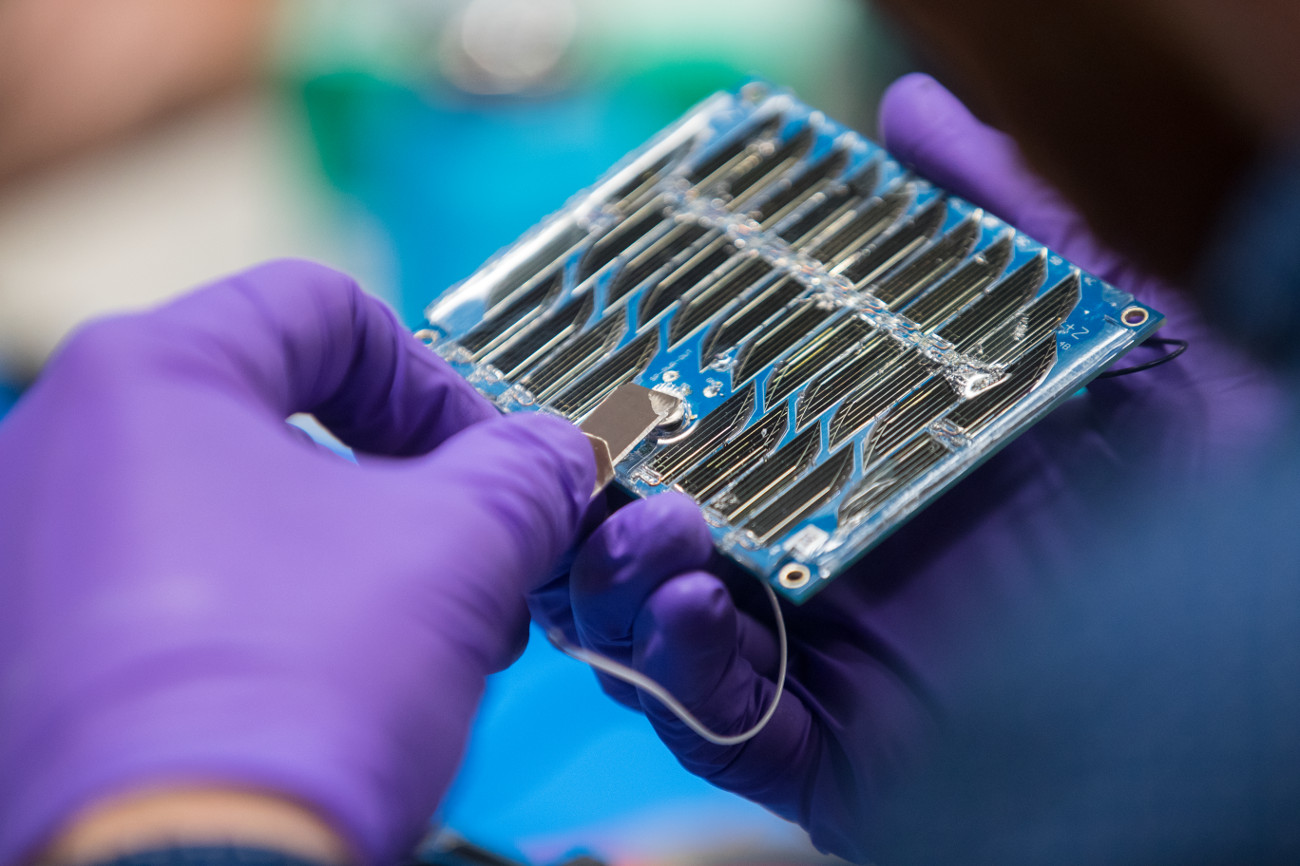PROVIDENCE, R.I. [Brown University] — After performing valiantly for two-and-a-half years in the extreme environment of low Earth orbit, a small satellite designed and built by Brown University undergraduates re-entered the atmosphere on Saturday, Dec. 26, burning up after one final pass over North America.
Amateur radio operators in Michigan and New Jersey picked up the last two transmissions from the satellite, called EQUiSat, in the early morning hours Saturday. Though garbled due to the satellite’s low altitude, the signals suggested that EQUiSat was performing well right up to its fiery end. EQUiSat’s orbital decay and reentry were fully expected and tracked carefully by Mike Umbricht, curator of Brown’s Ladd Observatory.
“We’re really proud of the satellite’s resilience and reliability,” said Sarang Mani, a senior and current project manager for the student group Brown Space Engineering (BSE). “Our satellite lasted significantly longer than the other CubeSats that were launched along with it, even though some of those were made by professionals and private manufacturers.
“Our team’s goal has always been to improve the accessibility of satellite design,” he added. “A critical aspect of realizing that goal is showing that our low-cost, student-made designs can outperform commercial satellites and development kits.”

The satellite was originally expected to stay in orbit for a maximum of two years, but a particularly mild solar cycle kept it aloft a bit longer. Rick Fleeter, an adjunct professor of engineering who is adviser to BSE, says the fact that EQUiSat’s systems kept functioning for its entire flight is a tribute to the students who designed, built and operated it.
“EQUiSat is just an assembly of parts — the success and the learning were accomplished by the ingenuity, hard work and dedication of a diverse team of Brown students past and present,” Fleeter said. “That’s what I will remember about it — the great satisfaction of having been a part of their team.”
To keep its systems running, the satellite’s custom-made solar array powered a set of LiFePO batteries, which were part of its mission objective. This type of battery had never flown in space before, so NASA was interested to see how they’d perform in an environment that goes from -250 degrees Fahrenheit in the shade to 250 degrees in the sun. Those batteries, along with the rest of the EQUiSat’s systems, performed about as well as anyone could have expected.
Emily Gilbert, a 2014 Brown graduate, was a BSE member when NASA first approved EQUiSat for flight. She says it’s been thrilling to see the project successfully handed off from one cohort of students to the next, taking it from an idea, to a design, to a prototype and finally to space.

“This was such an incredible group project to work on,” Gilbert said. “It’s been amazing watching the team at Brown grow and see the generations of students who have gone on to work in related fields.”
That’s certainly true for Gilbert. As a Ph.D. student in astrophysics at the University of Chicago, she recently played a key role is the discovery of the first Earth-sized exoplanet found in the habitable zone of its host star.
Even before EQUiSat’s mission ended, BSE students were already developing their next spacecraft. Called PVDX (Perovskite Visuals and Degradation eXperiment), the new CubeSat aims to be the first satellite powered by perovskite solar cells, a technology that’s seen major advances thanks to Nitin Padture’s lab in Brown’s School of Engineering. Just like the original EQUiSat team, Mani says he’s excited to hand the design off to a new group of students to carry forward.
“I'm graduating, but it’s been personally exciting for me to see how smart and capable all of our new members are,” Mani said. “PVDX's launch is many years away, but I'm looking forward to joining them to watch it, just as the club’s founders came to watch EQUiSat's launch with us in 2018.”